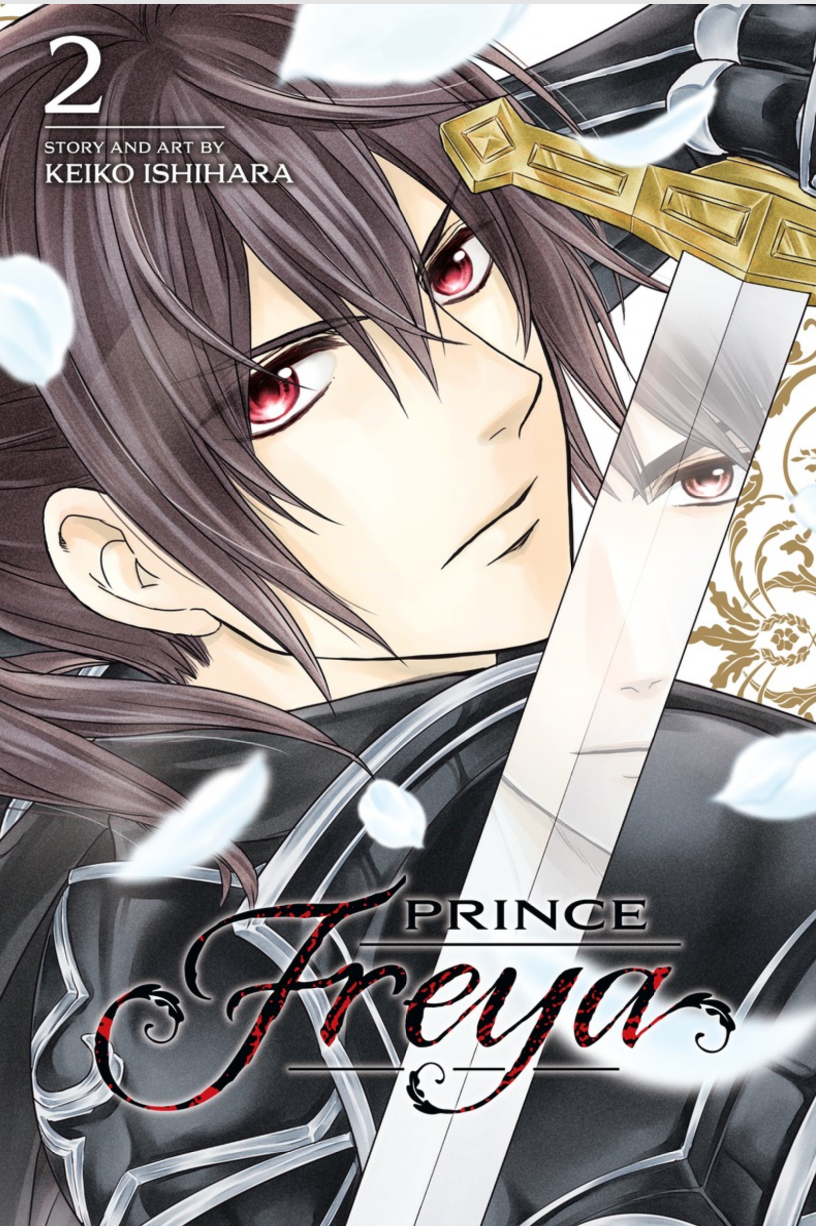Prince Freya Volume 3 by Keiko Ishihara
In three volumes Prince Freya has evolved into an enjoyable fantasy potboiler of a manga, with plenty of cliffhangers to keep the reader’s interest as well as a tendency to kill off sympathetic supporting characters. The story ratchets up the suspense because it seems clear that no one is safe from medieval mayhem in this story of a simple girl forced to masquerade as the charismatic Prince Edvard. As the manga opens, Freya is displaying her characteristic tendency to put herself in danger in order to save anyone in her near vicinity as she tries to rally the soldiers in a small fort against an enemy invasion.
The White Knight Julius is now Freya’s main protector after the deaths of her childhood companions Alek and Aaron. Does Julius start experiencing conflicting emotions about his new charge? Does one even have to ask when this is shoujo manga that we’re talking about??? Freya’s actions show her motivating her soldiers with a different type of charisma than the late Prince Edvard as she makes a point to get to know all of the men in the fort who are trying to defend her. She’s not afraid to take part in tactical maneuvers in order to confuse the enemy, and while the extent to which she is willing to sacrifice herself might seem extreme, when balanced at all the family and friends she’s lost in her life the reader can see why she’s resistant to seeing anyone die unnecessarily. There’s medieval battle scenes galore and an enemy soldier making fun of Julius for being a pretty boy, so there’s plenty to enjoy in this volume, which ends on an incredible cliffhanger that promises plenty of angst in the next volume. This manga isn’t particularly deep, but it does serve up plenty of gender-swapped shoujo medieval action which I am finding to be delightfully distracting in these current times.





Recent Comments